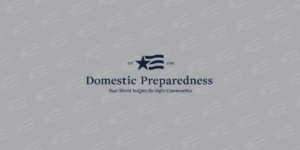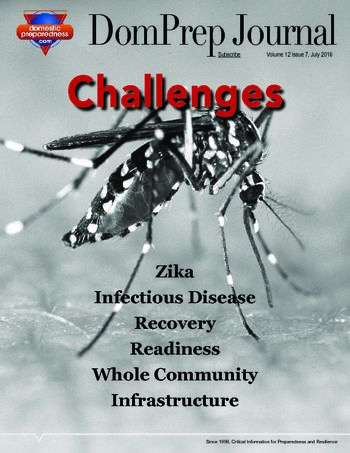
Social Impact Bonds & Sustainable Disaster Risk Reduction
Justin Snair and Megan Reeve Snair
July 27, 2016
National policy and practice tend to focus efforts and resources on disaster response and recovery, rather than on disaster risk reduction. Understanding disaster risks and incentivizing sustainable risk reduction efforts could help reduce overall disaster costs and even save lives.

Public Health - Opportunities for Action
Catherine L. Feinman
July 27, 2016
On 7 June 2016, the DomPrep team convened 14 subject matter experts from various disciplines to
address issues surrounding community resilience and public health. The purpose of the roundtable was to
align the missions and identify action items to create synergy among various community stakeholders.
This article summarizes the key takeaways from the roundtable participants.

Integration of Public Health Into the Whole Community
Kathleen E. Goodwin and Leana S. Wen
July 20, 2016
The Baltimore City Health Department (BCHD) is the oldest, continuously operating health department in the country – founded in 1793 to respond to a local yellow fever outbreak. BCHD is committed to the idea that health is critical to a community’s ability to thrive and thus deserves to be incorporated in decision making in almost every sector.

Recovery - Uniting Efforts in a Complex Process
Natalie N. Grant
July 19, 2016
Many communities – large and small – have recovered from disasters. Some have been successful, while others struggle to return. Disasters affect hundreds of communities nationwide every year and – at some point in time – each is confronted with the hard reality of recovering from a disaster. When the national attention and bright lights of the media fade, communities need to be prepared to recover.

National Household Survey, 2015
Domestic Preparedness
July 18, 2016
The Federal Emergency Management Agency’s (FEMA) Individual and Community Preparedness Division released the findings from its 2015 National Household Survey. Designed to measure household and individual preparedness and awareness, survey

Critical Infrastructure Protection: DHS Has Made Progress in Enhancing Critical Infrastructure Assessments, but Additional Improvements are Needed
Domestic Preparedness
July 16, 2016
The U.S. Government Accountability Office’s prior work has shown that the Department of Homeland Security (DHS) has made progress in addressing barriers to conducting voluntary assessments, but guidance is needed

Public Health: A Whole Community Approach Partner
Thomas Russo
July 13, 2016
Public health practice parallels the whole community approach advocated by 21st century emergency management practitioners. Therefore, public health’s emergency preparedness actions integrate nicely with contemporary emergency management practice. Several methodologies of public health practice lend themselves to collaboration with other planning and response disciplines. By examining these methods, public health can extend and maximize its role in community-based emergency planning, response, and recovery.

Today's Decisions Drive Tomorrow's Power Grid
J. Michael Barrett
July 12, 2016
For more than a century, the U.S. electrical power grid has dramatically improved the health, safety, and economic productivity of hundreds of millions of people. Although this grid stands as an ingenious accomplishment, experts fear that, as the 21st century progresses, the grid’s ability to meet evolving U.S. energy needs may falter without dramatic modernization.

The 'Glue' for Incident Management
George A. Morgan
July 12, 2016
“Forms, we don’t need no stinking forms to handle an all hazard emergency response in our ______ (fill in the blank: town, city, county, parish, tribal territory, region, state),” was no doubt echoed by many of the leaders of the numerous alphabet agencies attending mandatory National Incident Management System (NIMS) training some 15 years ago.

Bringing Public Health Preparedness Into the 21st Century
Emily Lord
July 12, 2016
The probability of certain public health threats, the costs and funding related to such threats,
and the “silo” effect of the public health sector all contribute to the preparedness gap between public
health and other sectors. It is time to bridge this gap and update preparedness efforts to better
prepare for 21st century threats.






